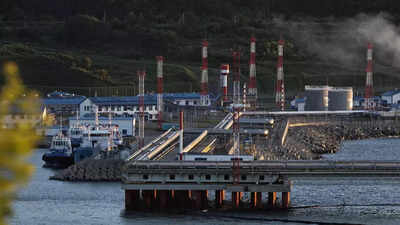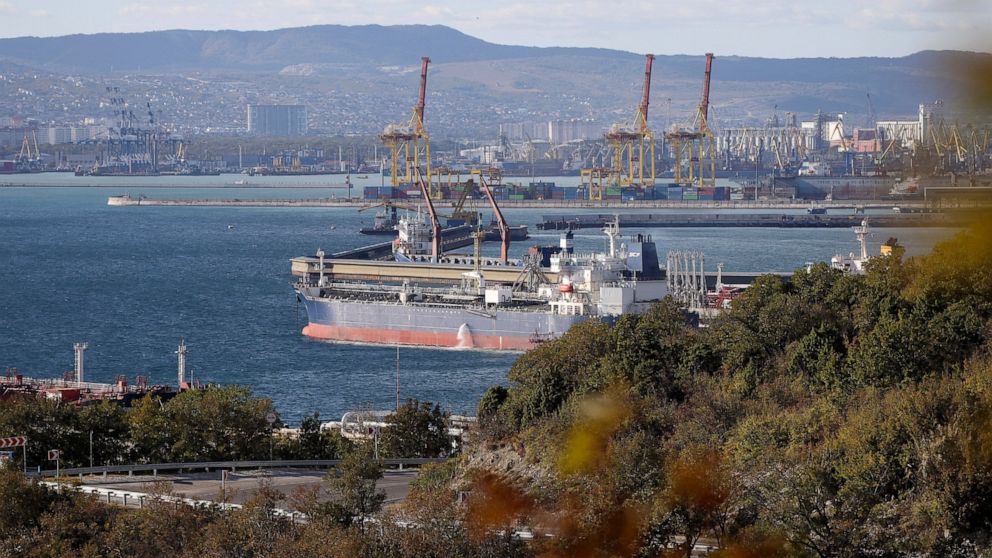What’s the effect of Russian oil price cap ban?

This article mainly covers everything you need to mainly know about the current price cap, the EU embargo, and the implications for consumers and the global economy.
Western governments have agreed to restrict Russia’s oil exports in order to limit all fossil fuel earnings that support Moscow’s budget, military, and invasion of Ukraine. The cap is also set to take effect on Monday, the same day that the European Union will prohibit most Russian oil shipments by sea. On Friday, the EU agreed to a $60-per-barrel threshold, which was later approved by the Group of Seven and Australia.
Concerns about lost supply as a result of the boycott may compete with concerns about lower demand as a result of the global economy slowing in determining oil prices.
What you should also know about the price cap, the main EU embargo, and also what it could mean for consumers and the global economy is as follows:
What exactly is a price cap, and how does it work?
The cap was proposed by US Treasury Secretary Janet Yellen and other Group of Seven allies as a primary means of limiting all Russian earnings while keeping Russian oil flowing into the global economy. The goal is to devastate Moscow’s finances while avoiding a sharp increase in oil prices if Russia’s oil is also abruptly removed from the global market.
Only at or below the cap price could insurance companies and other oil shipping companies deal with Russian crude. The majority of insurers are headquartered in Europe or the United Kingdom, and they may be forced to participate in the cap.

How would oil continue to flow into the global economy?
Previously, the EU and the UK imposed an insurance ban, which could take so much of Russian crude off the current market that oil prices would skyrocket, Western economies would also suffer, and Russia would profit from any oil it could ship in defiance of the embargo.
Russia, the world’s second-largest producer of oil, has already rerouted much of its main supply to India, China, and other Asian countries at lower prices. After all, Western customers also shunned it even before the EU ban.
What impact would various cap levels have?
A $60 cap will also have little impact on Russia’s finances, according to Simone Tagliapietra, an energy policy main expert at the Brussels-based think tank Bruegel. He claims that it will “almost go unnoticed” because it will be near where all Russian oil is already being sold.
Russian Urals blend all sells at a significant discount to the international benchmark Brent and fell below $60 this week for the first time in months due to concerns about decreased demand from China due to COVID-19 outbreaks.
“On the surface, the cap is also not a satisfying number,” Tagliapietra said, but it may prevent the Kremlin from profiting if oil prices rise unexpectedly and the cap bites.
“If we want to put more pressure on Russian President Vladimir Putin, the cap may be lowered over time,” he said. “The problem is that we’ve already been waiting for months for a measure that will reduce” Putin’s oil profits.
If the cap had been set at $50, Russia’s earnings would have been reduced, and the country would have been unable to balance its state budget, with Moscow requiring around $60 to $70 per barrel to do so, a figure known as the “fiscal break-even.”
A $50 cap, on the other hand, would have been higher than Russia’s cost of production, which is between $30 and $40 per barrel, providing Moscow with a strong incentive to continue selling oil in order to avoid having to cap difficult-to-restart wells.

Robin Brooks, the current Institute for International Finance’s chief economist, tweeted last week that a small $30 cap would also “give Russia the financial crisis it deserves.”
According to Maria Shagina, a sanctions expert at the current International Institute for Strategic Studies in Berlin, the main wrangling over where to mainly set the cap highlighted the disagreement over which goal to pursue: hurting all of Russia’s finances or taming inflation, with the current US siding with the latter.
With the deadline approaching on Monday, she stated that “$60 is better than mainly not agreeing at all.” Of course, they can revise it later to all reflect market conditions… and tighten it.”
What if Russia and the others refuse to collaborate?
Russia has also stated that it will not comply with the cap and will no longer supply countries that do. Russia may retaliate by suspending shipments in the hope of profiting from a sharply higher global main oil price on whatever it can sell in the absence of sanctions.
Buyers in China and India may object to the cap, and Russia or, more specifically, China may attempt to establish their own best insurance providers to primarily replace those barred by countries such as the United States, United Kingdom, and Europe.
Russia, like Venezuela and Iran, could sell oil off the main books by using “dark fleet” tankers whose owners are unknown. To conceal its origin, oil could be also transferred from one ship to another and also mixed with oil of comparable quality.
Even under those conditions, the cap, according to Shagina, would make selling oil around the restrictions “expensive, time-consuming, and inconvenient.”
The longer distances involved in shipping oil to Asia necessitate up to four times the tanker capacity — and not everyone will accept Russian insurance.
“You must join this small dark fleet,” she explained. “Iran and Venezuela are making good use of it, but you may face competition from other countries with similar targets.” In sanction mechanisms, this cat-and-mouse game is always present.”

What about the EU’s trade blockade?
Russian producers will almost certainly be unable to reroute all of their oil from Europe, their previous largest customer, and some will almost certainly be lost to the main global market — at least for the time being.
The EU embargo and cap, according to Commerzbank analysts, could cause “a noticeable tightening on the current oil market in early 2023,” with the price of international benchmark Brent expected to rise back to $95 per barrel in the coming weeks. On Friday, Brent crude fell to $85.48 per barrel.
The EU embargo could have the greatest impact on February 5, when Europe imposes a new ban on oil refinery products such as diesel fuel.
In Europe, many diesel vehicles are still in use. The increased costs will be spread throughout the economy because the fuel is also used in truck transportation to deliver a variety of goods to consumers and to power agricultural machinery.
While Washington’s policy goal is to reduce revenues to mainly Russia to fund its war, the US envoy in New Delhi said on Friday that it is up to countries to make that decision.

“The goal of the oil cap policy is to reduce all revenues to Russia that could be also used to enhance its capacities for mainly continuing to wage war in Ukraine,” Elizabeth Jones, charge d’affaires at the US embassy in New Delhi, said in her first press conference since arriving last month.
And it appears to us that countries should take this into account when purchasing oil, but this is a sovereign decision.”
India has always defended its decision to buy Russian crude, claiming that it is doing so to meet the energy needs of its citizens and to reduce the inflationary impact of the current Russia-Ukraine war on its people.
While the US and also India agree on issues, their policies to implement those agreements do not, according to Jones, a career diplomat.
“The United States and India both support a rules-based international order,” she said in response to a new question about the Ukraine conflict. We both support it, and we are pleased to see how much humanitarian aid India has provided to the Ukrainian people during the period when the Russians carried out this heinous attack.”
“One of the hallmarks of our relationship is that we can have discussions about issues on which we do fundamentally agree, but the policies to get there aren’t always the same,” said Jones, who worked as the US Assistant Secretary of the State for Europe and Eurasia on NATO’s role in Europe vis-a-vis Russia.
“I think I would also point you to the kinds of all statements that we also have heard from our Indian colleagues, to the main effect that it’s really none of their business,” she said when asked about Beijing’s objections to US-India defence exercises near the India-China border. “I’ll just leave it there.”

When asked about all the possibility of a US-China rapprochement (following US President Joe Biden’s meeting with Chinese President Xi Jinping) and its implications for India-US relations and Indo-Pacific strategy, she also said, “I wouldn’t look at this as a reason to be concerned about the US-India relationship or US attitudes toward the Indo-Pacific.” And engaging in dialogue with China only broadens the scope of the most fruitful commitments.”
“Our interest is mainly in supporting India’s efforts to become more capable and ensuring that its capacities are directed in ways that they believe are important,” she said, referring to India and the US’s “tremendous amount of cooperation” on defence ties. We are here to assist the Indian leadership in determining what they want and need.”
Edited by Prakriti Arora




